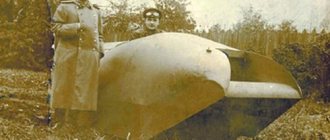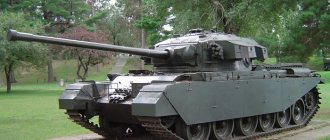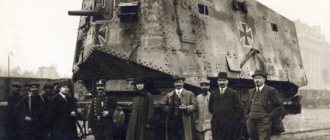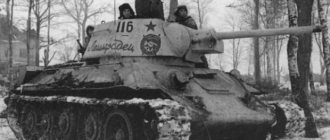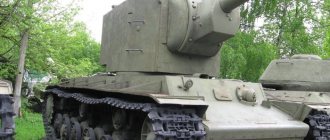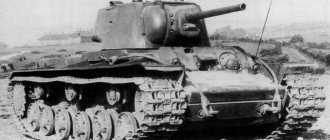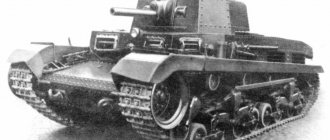Tank aces of Germany and the USSR in World War II
The very concept of “tank ace” appeared only at the beginning of World War II. The Germans were the first to count destroyed enemy tanks. Only French tank crews could have competed with the Germans in the initial period of World War II if France had not suffered such a rapid defeat. Aces do not appear on the lists of personnel of the tank forces of Great Britain and the United States, since neither the Americans nor the British particularly sought to conduct tank duels with the Germans. Tank battles reached their greatest extent on the Eastern Front, and as a result, it turned out that tank aces are available only in the ranks of the Panzerwaffe and Soviet tank forces.
The ten most successful German tankers are as follows:
sergeant major K. Knispel - 168 tanks;
Lieutenant O. Karius - 150 tanks;
Chief Lieutenant G. Belter - 144 tanks;
captain M. Vitman - 138 tanks (according to other sources, 120 or even 147);
Lieutenant P. Eger - 113 tanks;
Oberfenrich Rondorf - 106 tanks;
non-commissioned officer Belokh - 103 tanks;
sergeant major Gartner - 101 tank;
sergeant major Kerscher - 100 tanks;
Lieutenant K. Kerner - 100 tanks.
They achieved most of their victories on heavy tanks “Tiger” and “Royal Tiger”, which were significantly superior in firepower to most combat vehicles of the countries of the anti-German coalition. This circumstance is well illustrated by the following example. In six months of 1941, fighting on the StuG III assault gun, M. Vitman managed to destroy 25 Soviet tanks, and in two weeks of fighting on the Kursk Bulge, fighting on the Tiger - 30!
In 11 years, just over 50 thousand tanks and self-propelled guns were manufactured in Germany, while in the USSR during the Second World War alone - 109,100 tanks and self-propelled guns, in the USA - 135,100, in Great Britain - 54,800.
Having produced five times fewer tanks and self-propelled guns than its main opponents, Germany was able to create such tank forces that throughout all the years of the war, right up to its last days, were able to deliver powerful blows. In this regard, it is enough to recall the German counter-offensive troops in the Ardennes in December 1944 and in the area of Lake Balaton in the winter of 1945. In both cases, having absolutely no superiority in tanks (as well as in other forces and means) either on the Western or Eastern Front, the Germans managed to achieve it in the directions of the main attacks, which were repulsed by the colossal strain of forces as Western allies, and the Red Army.
All this testifies to the high level of combat training of privates and officers of the German tank forces, as well as the reliability of armored vehicles, which made it possible to operate tanks and self-propelled guns for a long time without their failure for technical reasons. German designers managed to achieve good combat characteristics of their armored vehicles. Good weapons, excellent optics and communications, reliable engines and chassis, comfortable working conditions for the crew - all this, coupled with the already mentioned excellent combat training of tank crews, allowed the Germans throughout the war to make do with fewer tanks and self-propelled guns than their opponents, and inflict very significant damage on them. losses. To confirm this fact, it is enough to mention that during the Second World War, Soviet tanks went on the attack three times on average, German tanks - 11 times, and for one damaged Panther, the Americans "paid", as a rule, with five Shermans! The loss ratio on the Eastern Front was no better.
By the way, the most effective German tanker who fought on the Panther is considered to be SS Oberscharführer E. Barkman, who accounted for 80 destroyed tanks. The Panther commander, non-commissioned officer of the “Gross Germany” division, R. Larsen, chalked up 66 tanks. However, the Panther as an anti-tank weapon was not much inferior to the Tiger. The successes of German tank crews who fought on other types of combat vehicles were more modest and therefore less known.
The 502nd Heavy Tank Battalion stands out in terms of its number of victories compared to other units equipped with Tigers. During his entire stay at the front from 1942 to 1945, the tank crews of this battalion destroyed 1,400 Soviet tanks! At the same time, its own losses amounted to 105 “tigers” and eight “royal tigers”. The ratio is approximately 1:12!
As for the performance of individual German tankers, even if their victories are indiscriminately halved, it will still be significantly higher than that of their enemy..
There are several reasons for this, and they are all closely interconnected. The fact that the level of combat training of German tank crews was very high does not need proof. Both the Wehrmacht and the SS troops paid great attention to this issue, as did the issue of crew coordination. Moreover, the latter, apparently, even more so - after all, a tank, whatever one may say, is a collective weapon. The hard-working crew was groomed and cherished. After recovery, the wounded tanker in the vast majority of cases returned not just to his unit, but to his crew, whose members, as a result, understood each other not only at a glance, but at a glance. In addition to training tankers and crews, so to speak, the lower level, the Wehrmacht paid great attention to establishing clear interaction in battle between tank units, as well as interaction with other branches of the military: infantry, artillery, aviation. I must say that the Germans succeeded in this. The interaction mechanism worked clearly and flawlessly from the first to the last day of the war. The organization of tank units and formations also contributed to this. For example, a well-developed, characteristic method of conducting combat operations was the formation of so-called “combat groups.” Such a group was a temporary connection from various parts of divisional subordination. The core of the combat group was a tank or motorized rifle regiment, to which artillery, anti-tank, sapper and other units were attached. Often, corps reinforcements were also included in the battle group. The combat group was headed by the commander of the regiment or brigade. Within a division, one or two combat groups could be formed. The result was a formation that was quite compact, easily controlled, devoid of rear services and convoys, with excellent interaction between various branches of the military. Orders to the artillerymen and sappers were given by the commander of the combat group, without asking the division commander. After the very first clashes with Soviet T-34 and KB tanks, battle groups of tank divisions began to include a battery of 88-mm anti-aircraft guns. From the memoirs of Soviet tank crews it follows that almost immediately after the collision with German tanks, Soviet tanks came under fire from 88-mm anti-aircraft guns. There was a feeling that these guns were moving directly in the battle formations of German tank units. In fact, this was the case; the organization of the battle group made it possible. At the same time, in the hands of the division commander there was always a reserve of a couple of motorized rifle battalions and several artillery, and then self-propelled artillery divisions, mainly 150-mm howitzers and 105-mm cannons, with which one or the other group could always be reinforced.
There was another reason that allowed the Germans to emerge victorious from tank duels more often. It lies in the design of the tanks. Yes, yes, precisely in a design that has nothing to do with the declared tactical and technical characteristics. According to the latter, Soviet tanks were no worse than German ones. In some ways they were inferior, but in others they were superior, and in the first year of the war the superiority in tactical and technical characteristics was unambiguous. But that’s not what we’re talking about now. We are talking about how well the crew of a particular tank manages to realize these characteristics, and not on the training ground, but in battle.
We have to admit that German tanks were much better suited for battle. A simple example. Almost all German tank crews note in their memoirs that Soviet tanks were late in returning fire, and sometimes simply could not determine for a long time where they were being fired from. No wonder! Insufficient quantity, poor quality, as well as poor placement of observation devices simply did not allow the crew of the T-34 tank, for example, to detect the target in time. In addition, this tank did not have a commander in battle, not by position, but by duties performed. Acting as a gunner, he saw only what he could see through the telescopic sight. The appearance of a commander's cupola on the T-34 in 1943, contrary to popular belief, changed little. In battle, the commander-gunner still could not use it. It is enough to look at the arrangement of the few observation devices on the T-34 to understand that the rest of the crew could hardly help him. It was only possible to change the situation with the T-34-85.
The commander of the KB-1 tank was not in a much better position. With a crew of five people, he could not be distracted by other functions, but could fully concentrate on controlling the battle. But that was not the case: its location in the tank did not allow this. The commander of the KV-1 tank was located to the right of the gun; to monitor the terrain, he had at his disposal the PTK-5 commander’s panorama, which ideally allowed for all-round observation. But only ideally. The tank commander himself could not rotate 360°, so it turned out that the real observation sector of the KB commander was approximately 120° in the front and right hemispheres. What was happening to the left and behind the tank remained a sealed secret for him.
It is no coincidence that so much attention is paid to monitoring from a tank. Much, if not everything, depended on who was the first to discover the enemy in battle. In this matter, German tanks with a clear functional division of duties among the five-man crew had a clear advantage. It was also provided with technical support for the commander with surveillance equipment - a commander's cupola.
However, one should not think that everything came down only to observation devices. The Germans were better off, for example, with means of communication, both external and internal. In any case, German tank commanders did not have to control the actions of the driver with the help of their legs placed on his shoulders, as was widely practiced in the T-34.
Therefore, it was not so easy to achieve victories using the equipment in the hands of Soviet tankers, especially in the initial period of the war. And yet, they achieved them.
Here is a list of the most productive tankers of the 1st Guards Tank Brigade:
senior lieutenant D. Lavrinenko - 52 tanks;
senior lieutenant K. Samokhin - over 30 tanks;
senior lieutenant A. Burda - over 30 tanks;
captain A. Raftopullo - 20 tanks;
senior sergeant I. Lyubushkin - 20 tanks.
For each destroyed German tank, the crews of Soviet tanks received the following monetary rewards: tank commander, gun (turret) commander and driver - 500 rubles each, loader and radio operator - 200 rubles each. If the crew died, the money was transferred to the defense fund. Moreover, each destroyed German tank could be chalked up not only by tank crews, but also by infantrymen, artillerymen, sappers, etc. For example, the gunner of an anti-tank rifle also received 500 rubles for a knocked out tank, and the second number - 250 rubles. The same applied to artillery commanders and gunners. They were also paid 500 rubles, the rest of the gun crews - 200 rubles. For each enemy tank destroyed using individual means of combat, a bonus of 1,000 rubles was awarded, and if a group of soldiers participated in the destruction of the tank, then the bonus amount reached 1,500 rubles.
Michael Wittmann's fight at Villers-Bocage
According to the established version, on June 13, 1944, the Tiger tank under the command of Michael Wittmann, in a battle near the French town of Villers-Bocage, destroyed (according to German data) 11 British tanks and 13 armored personnel carriers. Moreover, one Cromwell tank was destroyed by a ram. From the descriptions of the battle, it appears that Wittmann fought almost alone.
However, modern historians, studying German documents, have analyzed that battle literally minute by minute. And it turns out that Wittmann did not fight alone, but at least half of the armored vehicles of the 22nd British Armored Brigade were destroyed by other German tankers. There were a lot of them there. Taking this into account, the battle ceases to be unique at all and becomes quite ordinary in its results.
In general, it should be noted that in most such cases the scheme is the same. From the entire battle, only one (less often several) tank crew is singled out, with whom the results of the entire battle are recorded. They forget about the other participants in the battle. Often the results themselves are exaggerated several times over.
As you can see, this was not alien to the Germans. But it was also often encountered in the Red Army.
